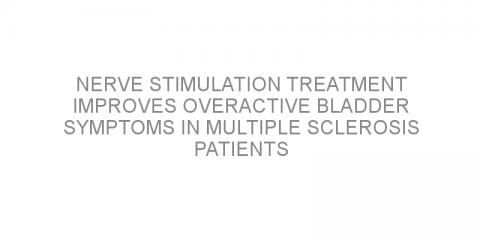In a nutshell This study compared adjustable and non-adjustable slings used in males after prostate surgery to help with bladder control. The study found that more patients chose the adjustable type, but no difference was found in symptoms or patient satisfaction between the two types of sling. Some background Surgical removal of the prostate can...
Read MoreUrinary incontinence Posts on Medivizor
Safety of vaginal mesh surgery
In a nutshell The study looked at complications after surgery in women who had a vaginal mesh procedure to treat urinary incontinence (bladder control). It found that 9.8% of women had complications within 5 years of the mesh surgery. Some background Vaginal mesh procedure is a type of surgery to treat stress urinary incontinence...
Read MoreDoes a weight loss program help bladder symptoms in obese women?
In a nutshell This study looked at whether weight loss through diet and exercise improved urinary tract symptoms in overweight/obese women. The study did not find a difference in improvement of urinary symptoms between patients who underwent a weight loss program and those who did not. Some background Urinary incontinence (problems with bladder...
Read MoreGuidelines for the surgical management of female SUI
In a nutshell This study outlined guidelines for the surgical management of stress urinary incontinence (SUI). Some background Stress urinary incontinence (SUI) is the involuntary urine leakage during exertion, sneezing, coughing, lifting or any other physical activity. It has been estimated that the prevalence of SUI could be as high as...
Read MoreFDA News Releases and Signing Up for Alerts
You may not know this but you can get warnings from the FDA on problems with prescription medications and over-the-counter drugs. For example, on August 11, a FDA News Release issued this warning about over-the-counter liquid vitamins that are given to young children and those who cannot swallow pills. “The U.S. Food and Drug Administration is...
Read MoreOutcomes of the adjustable male sling at 3 years
In a nutshell This study followed men who were treated with an adjustable male sling procedure for stress urinary incontinence (SUI). Researchers concluded that the adjustable male sling is safe and effective, particularly in men with mild to moderate SUI. Some background Urinary incontinence is common among men undergoing prostate surgery. It has...
Read MorePromising results on electroacupuncture for SUI
In a nutshell This study examined the effectiveness of electroacupuncture in reducing stress urinary incontinence (SUI). Authors concluded that 6 weeks of electroacupuncture was more effective than a non-active sham procedure in reducing urine leakage. Some background Stress urinary incontinence (SUI) is involuntary urine leakage during exertion,...
Read MoreComparing long-term outcomes of first and second artificial urinary sphincter procedures
In a nutshell This study compared long-term outcomes of primary and secondary artificial urinary sphincters (AUS). Authors reported similar rates of treatment satisfaction, quality of life, and urinary continence between men fitted with their first AUS device and men fitted with their second device. Some background Artificial urinary...
Read More11 years on: The effects of repeat vaginal sling procedures
In a nutshell This study examined the effects of a repeat (second) vaginal sling procedure to treat recurrent stress urinary incontinence (SUI) over 11 years. Authors concluded that repeat vaginal sling procedure is a suitable long-term treatment option for recurrent SUI after failure of a first one. Some background Vaginal sling procedures are...
Read MoreLong-term effects of TVT-O for stress incontinence
In a nutshell This study examined the long-term outcomes of women who underwent tension-free vaginal tape-obturator (TVT-O) for stress incontinence. The authors determined that TVT-O was very effective in the long-term and was a safe option for the treatment of stress incontinence. Some background Vaginal sling procedures are the most common type...
Read MoreNerve stimulation treatment improves overactive bladder symptoms in multiple sclerosis patients
In a nutshell This study examined the effectiveness of posterior tibial nerve stimulation (PTNS) in treating overactive bladders in patients with multiple sclerosis. Researchers concluded that overactive bladder symptoms can be significantly reduced with PTNS. Some background Urinary function is coordinated by the nervous system. Diseases of the...
Read MoreDiabetes increases the risk of some complications after artificial urinary sphincter placement
In a nutshell This study examined the effect of diabetes on outcomes with artificial urinary sphincters (AUS). Researchers reported that diabetes more than doubled the risk of erosion and/or infection within 5 years after AUS placement. Some background Artificial urinary sphincters (AUS) can help restore continence among men with severe stress...
Read More










